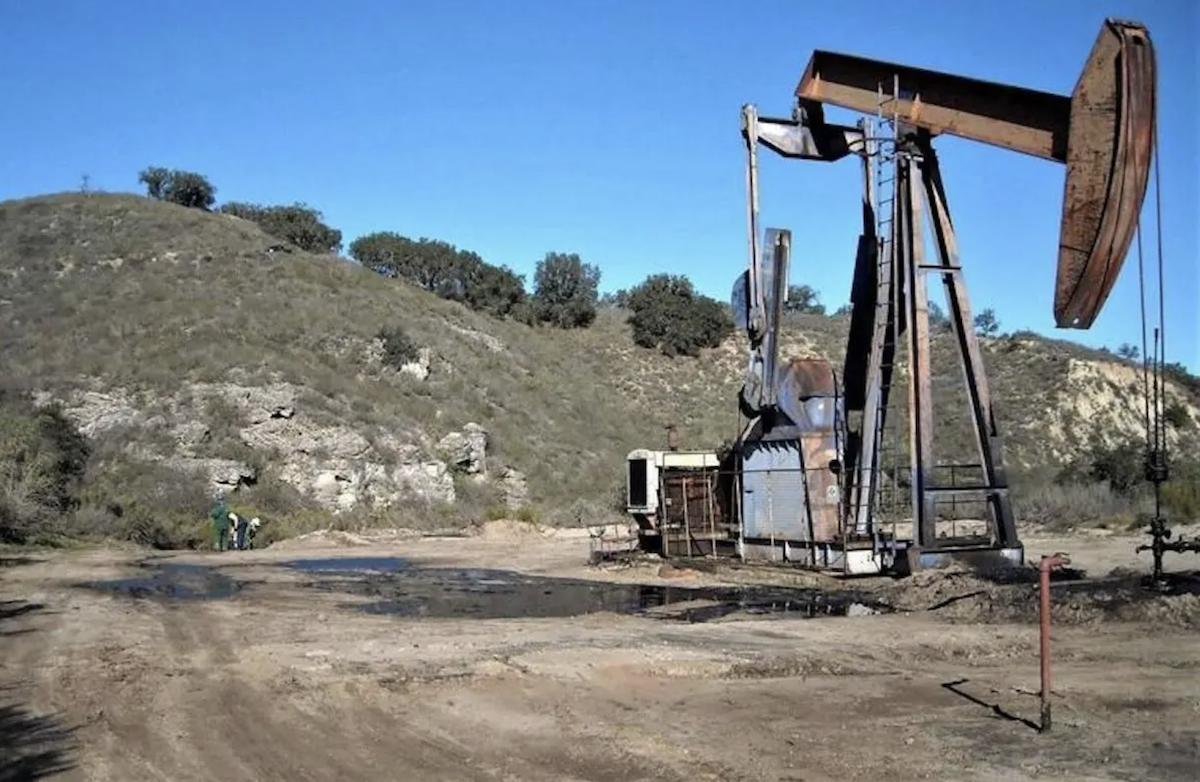Methane Leaks Focus of Discussion at Board of Supervisors
Air-Quality Monitoring May Result from Grand Jury Report on Idle Wells in Santa Barbara County

The Santa Barbara Grand Jury’s concern for oil well leaks were borne out in neighboring Kern County recently, when a visiting researcher heard a hissing noise that turned out to be methane escaping from two oil wells, idled since the late 1980s, according to media reports. A speaker at Tuesday’s Board of Supervisors hearing — Kyle Ferrar, with the FracTracker Alliance — identified himself as the individual who filed the methane complaint, stating that four more wells were newly found to be leaking. The wells are within 400 feet of schools and neighborhoods, Ferrar said, recommending that all well inspections be done using a gas spectrum imaging camera to detect leaks.
In answer to questions from Supervisor Das Williams, Kaitlin McNally of the county Air Pollution Control District replied that her agency did indeed inspect with a FLIR optical imaging camera, which cost about $100,000, and they had exactly one of them. Air Pollution’s compliance inspectors visited nearly all the active, idle, and orphan wells at least once a year, she said; small operations with a good track record were inspected every two or three years. Inspections were methodical, she said — countering Ferrar’s description of “waving a wand around in the dark.” The optical gas imaging camera was used to look the facility over, with leaks calibrated with a toxic vapor analyzer to quantify the amount of escaping gas against the standards for that gas.
Sign up for Indy Today to receive fresh news from Independent.com, in your inbox, every morning.
The hearing was the second to answer the Grand Jury’s charge that the county’s inspection of idle wells fell below safe levels. In reply, representatives of the agencies that inspect wells, including McNally’s, explained to the supervisors exactly which wells they inspected and how often. Within the county, Planning and Development’s inspectors with the Petroleum Unit also conduct inspections of all active, idle, and long-term idle wells every year, said unit chief John Zorovich. The County Fire Department responded to oil spills and inspected oil facilities, Fire Marshal Rob Hazard told the supervisors, but did not do any well inspections.
Trey Powell, with the state agency that monitors oil wells — the Geologic Energy Management Division, or CalGEM — appeared in a video link and enumerated that his agency inspected all active, deserted, and orphan (or bankrupt) wells every two years, which included doing a mechanical well integrity test periodically. An increase in idle well fees had increased oil company incentives to deal with those wells, Powell said, and the ratio of permits to plug and abandon wells was five times greater than permit applications to drill new wells.
The many environmental organizations that spoke and submitted comments supported the Grand Jury’s request for an annual report from the Petroleum Unit regarding idle wells. Supervisor Joan Hartmann, noting the dangers of methane as a greenhouse gas and a health issue near neighborhoods, observed that the Air Pollution Control District might be the more likely agency to produce a methane-monitoring report, a suggestion Supervisor Steve Lavagnino quickly supported. More information on industry incentives — or punishments, according to Supervisor Bob Nelson, in whose district many wells and oil company employees reside — to abandon idle wells will be part of the update of the county’s petroleum code in the fall.
Support the Santa Barbara Independent through a long-term or a single contribution.



